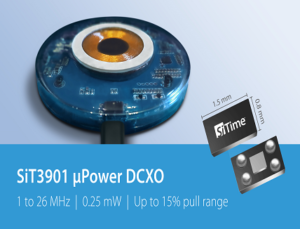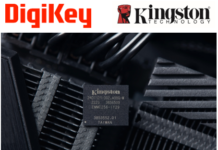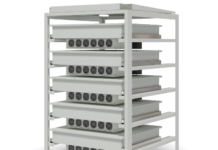
SiTime Corporation introduced the SiT3901 µPower digitally controlled MEMS oscillator (DCXO) targeting power-sensitive and space-constrained mobile and IoT applications. The SiT3901 improves wireless charging speed by up to 25% while reducing the overall timing solution area by up to 90%. The MEMS oscillator is ideal for wireless charging systems for smartwatches, activity trackers, hearing aids, and wearables.
“As electronics evolve, SiTime’s combination of innovative MEMS, programmable analog, and rapid release methodology continues to solve challenging timing problems quickly,” said Piyush Sevalia, executive vice president of marketing at SiTime. “The power and size requirements of new wireless applications demand a new approach to timing. The SiT3901 DCXO is the industry’s first µPower digitally controlled oscillator, and it delivers by improving charging efficiency and reducing the area.”
Wireless charging standards such as Qi and AirFuel rely on resonant power transfer to enable proximity charging. However, environmental interference may dynamically impact the resonant charging frequency, which slows down the charging process. The SiT3901 enables the charger to dynamically tune the resonant frequency, maximizing power transfer and delivering up to 25% faster charging. The digital control feature on the SiT3901 DCXO eliminates the need for additional passive components on the board, reducing the timing solution area by up to 90%. The resulting charging system works better and is smaller, more manufacturable, and more reliable.
Features of the SiT3901 Digitally Controlled MEMS Oscillator
The SiT3901 DCXO is the latest addition to the SiTime µPower MEMS oscillator family targeting power and space-constrained wearable, hearable, IoT, and mobile applications. µPower MEMS oscillators consume up to 90% less power and up to 90% less space compared to quartz oscillators, enabling environmentally friendly electronics. The SiT3901 offers high resilience to analog noise and includes the following features:
- Ultra-low 105 micro-amps of current consumption (typical)
- Ultra-wide digital pull range (up to 15%) for output frequency
- Stability over temperature of ±50 and ±100 ppm
- Wide temperature range, from -40 oC to +85 oC
- Ultra-small 1.5 mm x 0.8 mm package size
- Programmable frequency from 1 MHz to 26 MHz


















